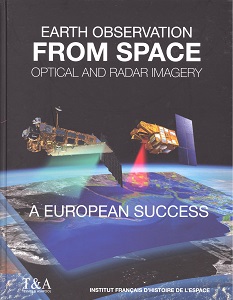Despite the current concentration on American commercial imaging satellites, Europe – and France in particular – has “played a pioneering role in the promotion of satellite-based observation of the Earth”, as this book illustrates. Its somewhat clunky subtitle, “Optical and Radar Imagery – a European Success 1960-2010”, summarises the content and reveals its nature as a historical review.
The volume’s four editors have corralled a long list of contributors to document the story in four main sections that are well illustrated with colour photographs. The sections cover “The Beginnings”, the period when “Projects become reality”, “Implementation and expansion”, and the “Revolution” when very high resolution became available. This is followed by a concluding section and a number of appendices.
Crucially, however, the book lacks an index, which is a real shame as it makes it next to useless for serious research. This is not helped by the overall lack of transparency of structure: the few bullet points under the chapter headings are not enough. And the volume suffers from a strange design that mixes standard and italic text, and has an indecipherable heading and subhead structure. At times, the page layout - with its coloured table and text boxes – is more reminiscent of a company brochure than a textbook; the back-cover logos of the French space agency and leading industrial companies lend credence to this view.
The original version of the book was published in French and it is clear that this is very much a French space-industry history. There is nothing wrong with that per se, but, despite the English translation, one feels that it has restricted its market to the original audience.











